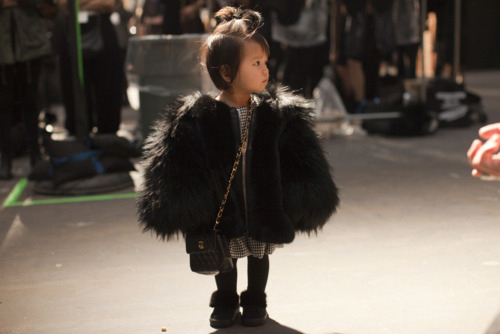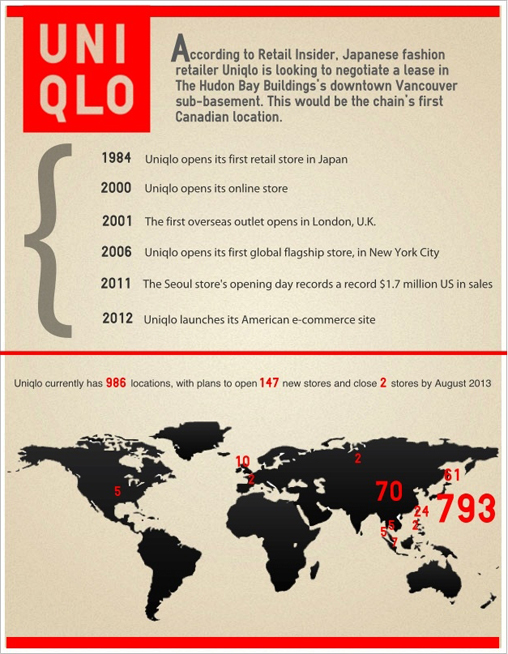I am currently reading Grace a biography of the creative director of American Vogue who was the first wife of international celebrity restaurateur Michael Chow.
So I am fascinated to learn more in this feature of fashion-meets-design that father of China, Maximillan and Asia Chow was the son of famed Shanghai's Peking Opera Theatre who went by the stage name of Qi Li Tung. >> MORE
Glammamamas

The scenes behind the photoshoot on Hong Kong's Luxup. Our friends Candice Suen, Yolanda, Sharie et al referred to as "the chic women of Hong Kong's haut monde. They combine ...careers and attend a seemeingly endless list of social events."
"Pivotal in this fachionable group is a vivacious trio of friends who have known each other for over 20 years: Sharie Ross-Tse, director of Total Media (her family company which founded the Asia Tatler magazines); Yolanda Choy-Tang, founding partner at bridal companies Central Weddings and Vera Wang Bridal; and Leigh Tung-Chou, ex-marketing and communications director for Christian Dior Asia Pacific, and the niece of Tung Chee Hwa, the former chief executive of Hong Kong. >> MORE
The top fashion publication its first issue of the year with first-ever solo Chinese on the cover.
The above shot by Steven Meisel celebrates "Fusion elegance. The language of style is universal. So true! >> MORE
Take a look at this toddler, niece of US fashion designer Alexander Wang. >> MORE
How to Note the Perfect Dress Shirt
By dynastic fashion royalty Dee Poon
By dynastic fashion royalty Dee Poon
- Know your proper collar and sleeve measurements.
- When you move your arms the front placket [where the buttons are] shouldn't gape or pull. The collar should be tight but loose enough to fit a finger between it, so when you wear a tie it fits well without choking you.
- Properly cut sleeves change the line of a shirt and are often overlooked. They shouldn't look too voluminous or balloon.
- The fit at the waist is personal, but Poon suggests a trim fit to look modern and clean. Dress shirts are made to be tucked in so when you try it on, raise your arms to make sure it doesn't fly out of your waistband.
- Watch out for details such as darts. Anyone can shove darts in the back to make it appear like it fits. A shirt should be cut right and drape properly.
- Buttons are a small but important detail. A lot of manufacturers cut corners with buttons.
>> SOUTH CHINA MOrNING POST
- Try on your shirt with and without a tie so you can use it for any occasion
Vera Wang flagship store on Staunton Street in Soho Central hosted a luncheon for friends ... >> MORE
Only the most elite like our good friend Yolanda Choy-
Tang
got to see first hand the creative genius of Karl Lagerfield's Fendi at The Great Wall.
Asian shoppers are savvy, informed and thorough in their research. And they are global, and multi-asseted.
- Gieves & Hawkes changed hands from Wing Tai & SHKP to guess-who? - expansionist Li & Fung group! -- 2012 TELEGRAPH
- Aquascutum purchase by Dr. Sam Chan -- 2012 BBC
- Real property in booming Vancouver, Canada -- REAL ESTATE FUND MANAGER
Dr. Sam Chan of Yangzekiang Garment Manufacturing Group just scored Aquascutum’s intellectual property rights and Asian business, which generates about 80 percent of global sales and 100 percent of the profits >> MORE
Fashion eyeing Asians -- 2012 FINANCIAL TIMES He was one of my demanding real estate clients, when I was a broker of commercial real estate at Colliers Vancouver where I rose to the ranks of Vice President [and first woman at the firm ever - in that role of Sales!].
We love these cute and witty illustrations from New York that are very Sartorialist with a twist. Instead of camera Justin Teodoro uses illustratrations and lots of witty posts. Look for the posting "If I were a girl..." and we especially that one with "My Jackie and Lee".
We are a big fan of this architect turned designer of fine contemporary jewellry in Canada. All of her creations are hand crafted by Brenda Wong herself.
This line is sold in Vancouver at Walrus.
Ruby and Canary Crystals
 >> Couture Costume Jewellery
>> Couture Costume Jewellery
 >> Couture Costume Jewellery
>> Couture Costume JewelleryThink of Allan's creations as perfect for travelling. Doesn't break the bank and Hollywood celebrities have embraced his work.
Misc.
Luxury Retail Sector is focussed on Asian growth
"The Greater China region currently accounts for 15% for Louis Vuitton sales. 28% of Swatch sales. 18% of Gucci sales. 11% of Hermes sales." - 2011 Q1
"There are fashionable people [in China] that you wouldn't even find in Paris, New York or London" --MUICCI PRADA
New wealth amongst China consures has driven luxury shopping. The number of affluent citizens earning a household income of more than one million yuan jumped 20% last year, according to McKinsey & Co. That group of people are expected to drive 38% growth in sale of luxury goods over the next five years. China is projected to be the world's largest luxury market according to CLSA. -- WALL ST. JOURNAL
- P&G moving Beauty, to Asia
- Richmont (Cartier, Van Cleef & Arpels) sales in Asia soar
- Fashion's obsession with China
- Ca$hed-up Chinese wear Prada
- Zegna's China-inspired suits sell for ~ $3,695 to $4,295 USD
- London designers court Chinese money
- Mass market retailers head to Hong Kong to sell to new rich PRC
- Asia as IPO Central for luxury consumer industry
- Asia is where its happening - Tokyo
- U.S. Designers seek foreign sales
- China Chic
- M.A.C. goes Taiwan Tribal
- Investing in Designers
- East Meets West Design team for Gap
Amazing Asian Design Talent - not just in China
The More Established Young Asian Talent
To explain the sharp increase in their numbers, many young Asian-American designers point to a cultural shift within their communities that has liberated them from traditional career expectations.A Bold Expansion for Derek Lam
Asian-Americans in their 20s and 30s were part of an immigration boom. The passage of the Immigration Act of 1965 effectively ended policies that put quotas on the numbers and origins of Asians allowed in the country. Once they arrived, the children of this wave of Asian immigrants generally didn't feel as much parental pressure as previous generations to excel in more-traditional fields such as business or science—in part because the previous wave of immigrants had proven themselves in those fields.
"I lucked out. A lot of my cousins, God bless them, they are doctors, in science or in business," says 38-year-old fashion designer Peter Som, who is of Chinese descent.
Today's Asian-American designers also say relatives their own age who weren't born in America faced more traditional career expectations. Jason Wu notes that his older brother, who chose to study business, had more years of schooling in Taiwan than he did.
A New American Dream
"These Asian-American parents look around and realize the American dream can be realized in other ways," says Frank H. Wu, author of the book "Yellow: Race in America Beyond Black and White," published in 2001. "They also realize their children are assimilated and don't face all the barriers that they might have faced when they first came here."
Of course, some Asian-American designers had parents who were adamant in their expectations of traditional success. Phillip Lim, the 36-year-old Thailand-born designer who started a women's fashion line in 2005, didn't tell his parents before he switched majors in college from business to home economics and fashion merchandising.
He says his mother and father, a seamstress and a professional poker player, respectively, expressed disappointment. "They said, 'We worked so hard. We brought you here. Why would you do that? No one looks up at us, we are the lowest class.' The whole guilt trip," says Mr. Lim, whose first men's fashion presentation will be tomorrow. "But that wasn't going to stop me from doing what I wanted to do."
Similarly, Mr. Panichgul ended up getting a business degree from Boston University to please his mother, who wanted him to pursue "more lucrative jobs like business or law or being a doctor." He didn't tell her that he wanted to be a fashion designer until he launched his line in 2004. He had, unbeknownst to her, quit his job as a writer for Harper's Bazaar to work on setting up the line. "She couldn't stop it after that," he says. "It's a rebelling. Our generation kind of went the opposite direction of what our parents wanted us to do."
A Relaxation of Pressure
Derek Lam had just crossed the line of high-fashion stardom -- and profitability -- when the global economic meltdown unfolded. WSJ's Vanessa O'Connell speaks to the designer about how his business has adapted to the current economy
In some cases, designers say it was enough for their parents if just some of their children pursued traditional paths. Richard Chai's sister is a business executive. Korea-born Doo-Ri Chung, whose line is Doo.Ri, says her brother is an investment banker.
Indeed, business success in the family could be helpful. Ms. Chung's brother has helped her with money, as well as business plans. Jason Wu started his label in 2006 with money from his family.
Asia's reputation as a clothing-manufacturing hub plays a smaller role in the rise of Asian-American designers than some might think. With a few exceptions, these designers didn't come from families that worked in textiles or clothing manufacturing.
Today's Asian-American designers don't wear their "otherness" on their sleeves as did the wave of Japanese designers like Issey Miyake and Yohji Yamamoto, who took the fashion world by storm in the '80s with avant-garde designs. Many young Asian-American designers' clothes, such as Jason Wu's blend of modernity with the intricacy of couture and Phillip Lim's modern takes on classic looks, are generally aimed at a broad mainstream audience.
"We are all so different with so many different backgrounds," says Derek Lam, 43, one of the few Asian-American star designers whose family was involved in the clothing-manufacturing business. Though he grew up around that, he went to college to study English and says his decision to become a fashion designer stemmed more from his desire to do something artistic than from roots in the family business.
One factor helped ease the way: In many Asian families, the fine arts have long been encouraged as a disciplined hobby for children. With the mainstream success of Asian classical musicians, architects and filmmakers, the arts have become an increasingly viable career choice. Fashion has come to be seen as a legitimate extension of the arts, especially because of design's emphasis on drawing and sketching.
Some designers say their parents were supportive of their choice to study fashion design so long as they went to what they considered the best schools for that field and excelled at their studies.
"Their attitude was if you want to do art or fashion, be at the best school," says designer Richard Chai, who grew up in New Jersey and attended Parsons the New School for Design.
Many of his peers, too, took summer classes at Parsons and the Fashion Institute of Technology while still in junior-high and high school, and then went on to apprentice under famous fashion designers, giving them skills and boldface names in their portfolio. Mr. Chai worked as a sketcher for Lanvin, a designer for DKNY and a design director for Marc Jacobs. Mr. Som worked under Michael Kors and Calvin Klein. Mr. Wu interned for Narciso Rodriguez. Ms. Chung worked under Geoffrey Beene.
Fashion schools have witnessed an influx of Asian-American students. Between 1998 and 2008, Parsons says, Asian-Americans were its fastest-growing ethnic group, more than tripling in number. At Parsons, "there were tons of Asians when I was there," says Mr. Som.
By contrast, Anna Sui, who launched her line in 1981, making her part of an earlier generation of Asian-American designers, says, "when I went to [Parsons], maybe there was one other Asian student, in the year before me."
Simon Collins, dean of fashion at Parsons, says the school didn't have to do any special outreach to Asian-Americans. "We didn't have problems finding Asian-American students," he says.
'Talent and Work Ethic'
Joanne Arbuckle, dean of the school of art and design at the Fashion Institute of Technology, says that while she doesn't like to generalize, she finds that students of Asian descent "come to the table with two things: talent and work ethic."
Ms. Arbuckle says that during her 10 years of teaching in the fashion-design department, she found the drive of Asian students "noticeable." She also said some had strong math and engineering backgrounds, "which is a tremendous benefit to being a designer." Those students viewed design almost like solving a problem, she says: "It's right or it's wrong and they never gave up until it was really right."
Though Asian-American designers want to be looked at more for their individual work than for their common background, a number of them do admit to a sense of pride. Says veteran designer Vera Wang, "It is kind of a wonderful phenomenon." - 2009 September 9 WALL ST JOURNAL



























